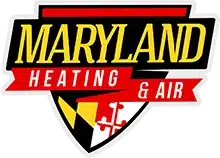Managing a commercial building comes with plenty of responsibilities — from ensuring tenant comfort to keeping operational costs low. But one of the most significant expenses building managers face is HVAC energy consumption. The good news? With the right strategies, you can cut HVAC energy bills by 20% or more without sacrificing comfort or performance.
This guide walks you through practical, data-backed methods to lower your commercial HVAC costs while extending system life and improving efficiency.
Understanding What Drives High HVAC Energy Costs
Before making improvements, it’s essential to understand why HVAC systems consume so much energy. For most commercial buildings, heating, ventilation, and cooling can account for up to 40% of total energy use.
The main culprits often include:
-
Outdated or oversized HVAC units
-
Poor insulation and leaky ductwork
-
Lack of regular maintenance
-
Inefficient temperature control or thermostats
-
Inconsistent air balancing
Knowing these factors helps building managers identify where the most significant savings can be achieved.
9 Ways to Cut HVAC Energy Bills
Start with Regular HVAC Maintenance and System Audits
Routine HVAC maintenance is one of the easiest and most cost-effective ways to lower energy bills. A dirty filter, leaking refrigerant line, or clogged coil can reduce efficiency by up to 15–25%.
Scheduling quarterly inspections ensures that your commercial ac and heating systems run smoothly and efficiently throughout the year. Preventive care also helps detect wear-and-tear issues before they escalate into costly breakdowns.
If you don’t already have a trusted partner, consider reaching out to commercial hvac contractors near you for professional maintenance programs tailored to your building’s size and energy goals.
Upgrade to Smart Building Controls and Automation
One of the fastest ways to see measurable energy savings is through HVAC automation and smart controls. Intelligent systems monitor occupancy, temperature, and humidity to adjust heating and cooling automatically.
For example:
-
Smart thermostats can reduce HVAC runtime during non-business hours.
-
Zoning systems ensure only occupied areas receive conditioned air.
-
Demand-controlled ventilation (DCV) systems use sensors to regulate airflow based on real-time CO₂ levels.
Building automation doesn’t just cut costs — it improves comfort and reduces unnecessary wear on equipment.
Optimize Airflow and Duct Efficiency
Even the most advanced commercial HVAC system can waste energy if ducts are leaking or poorly designed. Studies show that leaky ducts can cause 20–30% energy loss in commercial buildings.
Here’s what to do:
-
Seal and insulate ductwork to prevent energy waste.
-
Balance air distribution to eliminate hot and cold spots.
-
Regularly clean ducts to improve air quality and airflow.
Optimizing duct efficiency allows your system to deliver the right amount of air without overworking compressors and fans — a simple step that pays off in both comfort and cost savings.
Invest in Energy-Efficient HVAC Equipment
If your HVAC system is over 10–15 years old, it may be time for an upgrade. Modern energy-efficient commercial HVAC units can reduce energy consumption by up to 30% compared to older systems.
When evaluating new equipment:
-
Choose units with ENERGY STAR® ratings.
-
Consider variable speed compressors for better energy modulation.
-
Install high-efficiency air filters to maintain clean airflow.
For a better understanding of lifespan and replacement timing, check this helpful guide on how long commercial AC units last.
Use Seasonal Maintenance to Your Advantage
Seasonal HVAC maintenance helps prepare your system for upcoming temperature extremes. For example:
-
Spring and summer: Inspect cooling coils, refrigerant levels, and thermostats.
-
Fall and winter: Clean burners, inspect heat exchangers, and check gas connections.
By optimizing performance before each season, you prevent energy waste and maintain consistent comfort throughout the year.
Improve Building Envelope and Insulation
Many building managers overlook the impact of insulation on HVAC energy bills. Poorly insulated walls, windows, or roofs can cause heated or cooled air to escape — forcing your HVAC system to work harder.
To reduce this energy drain:
-
Add or replace insulation in attics and walls.
-
Use double-pane or energy-efficient windows.
-
Seal cracks and gaps around doors and vents.
These upgrades not only lower HVAC costs but also improve indoor comfort and reduce temperature fluctuations.
Monitor and Analyze Energy Consumption
Installing energy monitoring systems can provide real-time insights into HVAC performance and energy use. These systems help you:
-
Identify inefficiencies or malfunctioning components.
-
Track performance over time.
-
Compare energy use before and after maintenance.
With data-driven insights, you can make informed decisions that continuously drive down costs and optimize HVAC operations.
Train Staff and Tenants for Energy Awareness
Even the most efficient HVAC system can’t reach its potential if building occupants aren’t energy-conscious. Training maintenance staff and tenants about proper HVAC usage can lead to significant savings.
Simple behavioral changes like turning off unused thermostats, closing blinds during summer, or reporting maintenance issues early can go a long way in reducing energy consumption.
Partner with an Experienced Commercial HVAC Service Provider
Energy efficiency doesn’t happen overnight — it requires ongoing monitoring, maintenance, and optimization. Working with a professional commercial HVAC service ensures your system remains reliable, efficient, and compliant with energy codes.
Experienced HVAC partners can help you:
-
Develop a customized energy management plan.
-
Schedule predictive maintenance.
-
Identify rebate and incentive programs for energy-efficient upgrades.
Long-term collaboration ensures consistent performance improvement and sustainable savings year after year.
Conclusion
Cutting HVAC energy bills by 20% or more is achievable for any building manager willing to take a proactive, strategic approach. From upgrading old systems and sealing ducts to leveraging smart controls and routine maintenance, every improvement contributes to long-term savings and better occupant comfort.
By implementing these measures, you not only reduce operational costs but also extend your HVAC system’s life and boost your building’s overall sustainability.
Take the first step today — review your current system, schedule an inspection, and make efficiency your top priority.


 855-410-TECH(8324)
855-410-TECH(8324) APPLY FOR FINANCING
APPLY FOR FINANCING